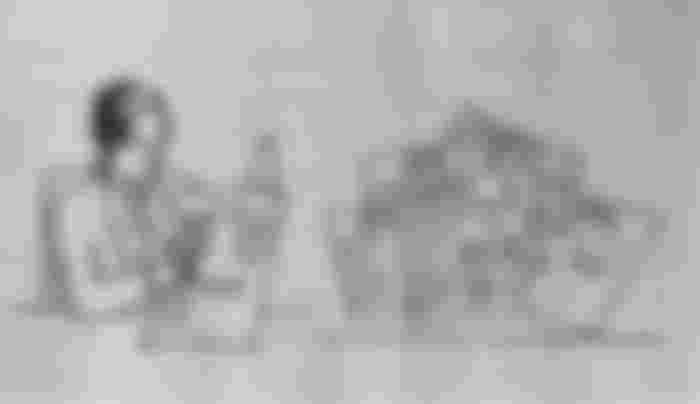News! News! News!
what is news?
Key words: Bunk off mass people objective bias broadcast refer editorial informative educative.

'I eat rice everyday. I play cricket. I don't bunk off school, blah...blah...blah...' There are common events. They happen every day or on some occasions. Are these events news? Should they be published in newspapers? The answer is a big 'NO'. Then what is news anyway? What do we want to know from the media? 'When a dog bites a man that is not a news, but when a man bites a dog that is news,' says Charles Anderson Dana.
Do you read newspaper?The first thing is that the news should be a piece of information.
Secondly, the information should be recent or new, and hence it is 'news'.
Thirdly, mass people should take interest in it.
Fourthly, it should be self-explained.
That is, it should answer all the questions with who, which, what, where, when, why and how.
Finally, it should be objective.
Recently, another aspect has been added: news is either printed or broadcast or on the internet.
There are opinions that the term 'news' comes from 'new'. Others say it is news because it comes from all directions: North, East, West and South.
The First Newspaper

Humans have a natural curiosity to know the unknown, to see the unseen and to conquer the unconquered. Every day so many things are happening around and human beings are eager to know them all. They not only like to know happenings in their own and other countries, but also what is happening in Antarctica or Mars, or Siberia.
This curiosity to know and understand situations is not a contemporary phenomenon. It is true, the world wide web (www) has made our life easier and new we know anything that takes place at the farthest corners of the world with a single click.
However, it was not that easy a few hundred years ago.

Through a process of evolution, the newspaper has now become a part and parcel of human life. Modern people cannot think of a day when they don't have a newspaper passed through the doors in the early morning. A fresh newspaper with a hot cup of tea or coffee has been the symbol of modern urban life.
We deep at a newspaper for national, local, international or sports news. Is there a show of Nuruldiner Sarajibon, or Chitrangoda or Hamlet? Is there a suitable job offer? Are there any sales?
Let us have a look at the newspaper. The newspaper is the ultimate destination for advertisements of products, classified advertisements for finding brides and bridegrooms, houses to-let, sales, and what not? It is said, in the modern world, information is power and newspaper is an information hub.
But how were the initial days of the newspapers? The first newspaper, Acta Diurna, was published in ancient Rome in �59 BC. Acta Diurna meaning 'daily acts' posted different types of announcements and social events.
However, Acta Diurna was not a paper-based newspaper. It was a massage board displayed in public places. Just imagine how old the history of the newspaper in human civilization is! Acta Diurana was published just 59 years before the birth of Jesus Christ!
Much later, at the beginning of the 16th century, printed 'news books' were publish in England and they were based on stories such as battles, disasters or public celebrations.
The London Gazette claims to be England's oldest newspaper published in ��1665. The 17th century also marks the regular publication of newspapers in Germany, Italy and the Netherlands. Johann Carolus published the first weekly newspaper, Account of All Distinguished and Commemorable News, from Germany in 1605. The newspapers that are delivered to your house each day started its journey from the 18th Century. The Pennsylvania Packet and The Daily Advertiser were the first daily newspapers from the US, which came out in 1784. Many independent newspapers ran before that on a weekly or monthly basis.
The first newspaper printed in Italy was Hickey's Bengal Gazette in 1780 under the British Raj. It was published by James Augustus Hickey. In this process, the first Bangla weekly newspaper, the Samachar Darpon, came out in 1818. The missionaries ran this newspaper. The Azad Became Dhaka's first daily newspaper. It was founded in 1960s. The Azad played an important role during our language moment as the daily Ittefaq played glorious role in our struggle for independence.
In the 21st century, there is a change in the form and presentation of newspapers. They are no more confined to tabloid and broadsheet sizes. Nearly all the world's major newspapers have begun publishing online editions of their newspapers and although some newspapers charge their readers for access, many have their web editions free. Yet, having a printed newspaper is still an obsession for many people in the world.
TV News Report
Have you noticed TV reporters appearing on the screen with reports of different types of news? Have you though how these reports are monsoonal showers or bitter winter can never stop them from reaching the news spot.

The reports include political issues, people's protests, accidents, social events or thoughtful opinion of expert people, price hike, a celebration after a cricket match win and what not? TV reporters do not miss or delay to cover them.
It is said that old news is no news. Consequently, there is always a hurry among the reporters to be up-to-date in developing stories or even break the story first. Breaking News has become popular among the viewers, it means the first and fast appearance of a startling news on the channels. Once a journalist has been assigned by his editor to cover a story, a team is formed. Usually is consists of a journalist, a camera operator and sometimes a sound and or a light technician also join as crew.
The Journalist investigates the topic, plans interviewing the relevant people and puts forward a concrete idea of the topic which is going to be filmed. The news team then goes out to cover the news and collect the materials. The voice is then recorded in a studio usually by the journalist or a news presenter. This is the voice that the audience hear while the video chip moves on narrating the story and the reporter is not seen on the screen at that time. It is done to make the visual material and the full story clear to the audience with information and explanation. The editor may edit the report before it is ready to go on air, but often there may be reporting of incidents.
A TV news report usually beings with an announcement. One or two short sentences explain what it is about. Then in the main report we see the reporter is describing an event into a microphone. The emphasize the significance of the situation, to show its authenticity, and to convey the feelings of the reporter and can see what's going on in the background. The shots of the scene need to be easy to understand since it provides important visual information to the viewers. It depends on the skills of the camera operator.
In a TV report, there are usually comments or opinions from one to four persons who are related. These statements can be for or against a particular topic. TV news report can use graphic like charts, tables, graphs or archive materials like old photos or videos to make it more comprehensive and credible to the audience. In the concluding part, the reporter summarizes the possible outcomes of the story.
A live coverage of a news is different. Everything has to be finished on the spot and news video is aired instantly and in most cases without much pre-plan. No chance of editing and very less chance for retaking the shot there. Quick intelligent decisions and prompt management of required technical assistance in a situation determines the quality of live reports.
Reporters need to be careful to keep camera shorts shorts and to the point. They also need to use simple language, and speak clearly and concisely as there will be time constraints for each piece of report. In order to keep video shots steady, the camera operator often uses tripod.
Thank you very much my dear friend for reading my article. @tanvir2560



